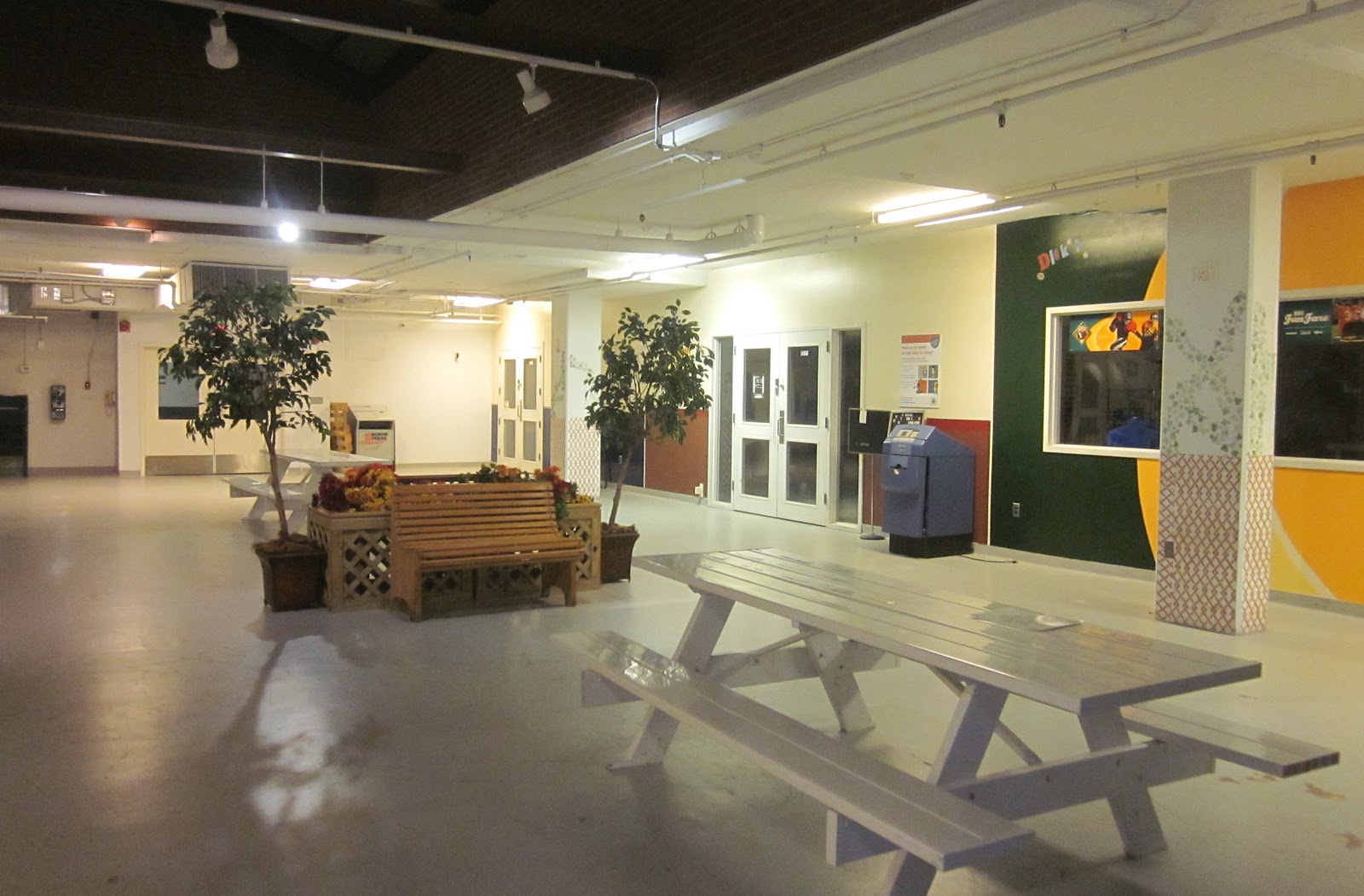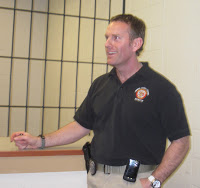FXCO Citizens Police Academy offers a glimpse behind the badge
This the first in a series of reports about my experiences in the Fairfax County Citizens Police Academy.
 |
| A mock shopping center in the Criminal Justice Academy |
The first session of the Spring 2012 Fairfax County Citizens Police Academy took place March 1 at the Criminal Justice Academy in Chantilly and offered a tour of the training facility, as well as an overview of the Police Department.
The academy has a mock shopping center, called “Practical Plaza,” with a bank, deli, convenience store, jewelry store, and sporting goods shop for practicing all sorts of scenarios. There’s also a mock apartment which is used to teach police recruits how to deal with domestic situations, a mock courtroom for practicing giving testimony, and a black room with flashing lights to duplicate a nighttime street environment and padded floor to practice take downs.
Every recruit goes through nine and a-half months of training plus three months on the street with a field training instructor. The training includes two weeks of driving and two weeks of firearms instruction plus training in defensive tactics, said Master Police Officer Travis Schaney. “We want our officers to have confidence,” he explained. “Things can go bad in the blink of an eye.”
A college degree is not required to become a police officer, but would be helpful, especially for those interested in advancing to supervisory positions.
 |
| Schaney |
Recruits have to be 21 by the time they graduate. They have to pass a series of background checks, including a psychological assessment, as well as pass tests in a number of subjects, including five spelling tests, which Schaney said is important for submitting accurate reports. Recruits have to be able to drag a 150-pound dummy 12 feet, but once they graduate, they don’t have to maintain a certain level of fitness.
Police Chief David Rohrer said one of his biggest challenges is getting enough recruits to reflect Fairfax County’s diverse population. Only 12 percent of the police force is female, about 8 percent is African American, 5 percent is Hispanic, and less than 3 percent is Asian.
Rohrer said his other major concerns include drunk driving and domestic violence. There are about 15 homicides a year in Fairfax County. “We are blessed with an incredibly low crime rate compared to surrounding jurisdictions,” he said.
Crime trends have changed over the years, Rohrer said. Burglaries have declined, for example, from an annual rate of about 5,000 in the 1970s to 1,300 in recent years. Meanwhile, financial crimes and identity theft have increased, and the theft of GPS devices and other items from cars is a growing problem.
Rohrer believes the graying of the population is one factor leading to a lower crime rate. But on the other hand, there have been more crimes involving the financial exploitation of elders, including workmen who ask for large amounts of money upfront for home improvements and then fail to do the work or do a shoddy job.
According to Rohrer, the urbanization of Tysons Corner will require “a new kind of policing,” with more officers on foot and bikes. He expects Metro will bring in more crime to the area. A new high-rise police station is proposed for Tysons.
It’s hard to believe, but back in 1940, there were just seven officers in the entire Fairfax County police force. At that time, most law enforcement was handled by the sheriff’s department. The Annandale station opened in 1961 in a converted house, and the existing Mason District station was built in the late 1980s.
Today, the county has the 35th largest police department in the nation. The department has 1,765 employees, including 1,354 sworn officers and 31 animal control officers. There are 1.3 police offers per 1,000 residents.
There are 40 people in the 2012 spring session of the Citizens Police Academy. Some are Fairfax County employees, some work with youth and families, others are thinking of pursuing careers in criminal justice, and some are just interested in learning more about law enforcement. [No one said they were criminals and want to avoid getting caught.]
The purpose of the Citizens Police Academy is to enhance public understanding of the police, said 2nd Lt. Alan Hanson. “We’re just people doing a job that is sometimes every difficult.”
“We see people at their worst,” Hanson said. “A lot of people don’t like to give up control, and we have to exert force.” As a result a lot of people “have a negative view of the police.”
Through the Citizens Police Academy, he said, the department hopes to increase the public’s understanding of police operations and the challenges faced by police officers, build public trust, and create new partnerships.


The original Mason Station at the present location was there before the late 80s. I worked there selling County auto decals in the Spring of '81.